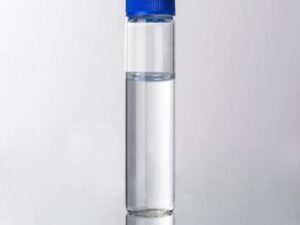Description
2-Ethylhexanol: A Workhorse Chemical with a Diverse Range of Applications
2-Ethylhexanol (2-EH), a versatile and widely used organic compound, often flies under the radar despite its crucial role in numerous industries. This colorless, oily liquid, also known as isooctanol, boasts a mild odor and a unique chemical structure that lends itself to a surprisingly broad spectrum of applications. Let’s delve into the properties and uses that make 2-EH such a valuable chemical.
What is 2-Ethylhexanol?
2-Ethylhexanol is a branched-chain alcohol with the chemical formula C8H18O. Its structure features an eight-carbon chain (octanol) with an ethyl group attached to the second carbon atom. This branching is key to its properties: it contributes to its low viscosity and its ability to act as a good solvent.
Key Properties of 2-Ethylhexanol:
- Low Viscosity: Easier to handle and incorporate into various formulations.
- Good Solvent Properties: Excellent for dissolving non-polar substances.
- Low Volatility: Reduces the risk of evaporation and associated safety concerns.
- Plasticizing Effect: Imparts flexibility and durability to materials.
- Reacts with Acids: Forms esters, which are used in various products.
A Multifaceted Chemical: Applications Across Industries
The unique properties of 2-EH translate into a wide array of applications across several key sectors:
- Plasticizers: By far the largest application for 2-EH is in the production of plasticizers, particularly dioctyl phthalate (DOP), dioctyl terephthalate (DOTP), and other phthalate and non-phthalate esters. These plasticizers are added to polymers, most notably polyvinyl chloride (PVC), to make them more flexible, durable, and resistant to cracking. PVC is found in a vast range of products, including flooring, wall coverings, cables, and medical devices.
- Solvents: 2-EH serves as a valuable solvent in various industries, including paints, coatings, and adhesives. Its ability to dissolve non-polar substances makes it ideal for formulating these products. It helps ensure even application and contributes to the desired properties of the finished product.
- Defoamers: 2-EH is an effective defoaming agent in industrial processes. It reduces surface tension, causing bubbles to collapse and preventing the formation of unwanted foam, which can hinder production efficiency. This is particularly important in industries like paper manufacturing, textiles, and wastewater treatment.
- Chemical Intermediates: 2-EH acts as a crucial intermediate in the synthesis of other chemicals. For example, it’s used to produce acrylates, which are building blocks for polymers used in coatings, adhesives, and textiles.
- Mining Industry: 2-EH is used as a solvent in the extraction of metals and minerals from ores. It helps to selectively dissolve and separate the desired materials, increasing the efficiency of the extraction process.
- Cosmetics: In some cosmetic formulations, 2-EH is used as a solvent and emollient.
Safety and Handling Considerations:
While 2-EH is widely used, it is essential to handle it with care and follow proper safety procedures. Direct contact with skin or eyes can cause irritation. Inhalation of high concentrations of vapors can lead to respiratory irritation. Always use appropriate personal protective equipment (PPE) such as gloves, safety glasses, and respirators when handling 2-EH. It is crucial to store 2-EH in well-ventilated areas away from heat, sparks, and open flames.
The Future of 2-Ethylhexanol:
The demand for 2-EH is closely linked to the growth of the plastics industry and other sectors where it plays a vital role. While concerns about the environmental impact of phthalate plasticizers have led to the development of alternative options, 2-EH continues to be relevant, particularly in the production of non-phthalate plasticizers. Ongoing research and development efforts are focused on improving the production process, exploring new applications, and addressing environmental concerns to ensure the continued responsible and sustainable use of this valuable chemical.
In conclusion, 2-Ethylhexanol is a versatile and essential chemical compound with a wide range of applications. Its unique properties make it indispensable in the production of plasticizers, solvents, defoamers, and chemical intermediates. Understanding its properties and uses is crucial for appreciating its significance in various industries and for ensuring its safe and responsible handling.



















Reviews
There are no reviews yet.